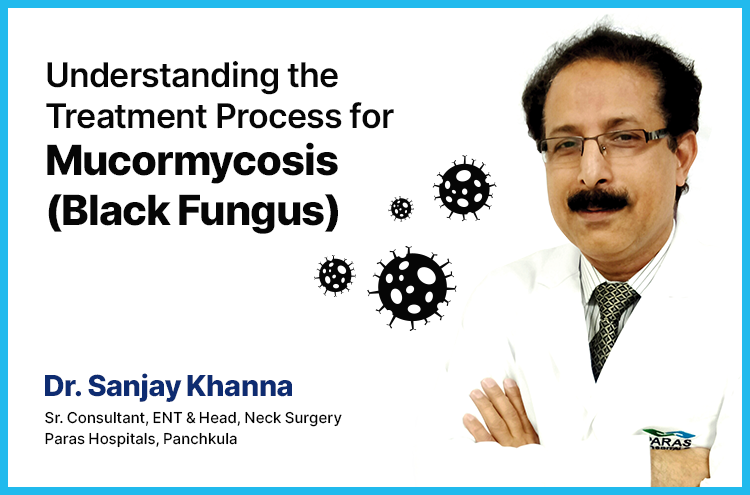Understanding the Treatment Process for Mucormycosis and Black Fungus
Apr 19, 2022
Black fungus is the common term for Mucormycosis, a type of fungal infection that is often contracted through the use of medicinal steroids or the inhalation of fungal spores. It has been a cause of concern for several people, specifically COVID patients, as the black fungus disease spreads across Tricity and North India. The duration of a Mucormycosis and Black Fungus, fungal infection differs according to various factors such as the intensity of the infection, predisposition, weaker immune systems, and the treatment process. To understand this further, let’s look at what is black fungal infection treatment process entails and how those infected in Tricity and North India can combat it.

Get the treatment of Mucormycosis and Black Fungus, know the symptoms of black fungus, and black Fungal – Why Mucormycosis fungal infection occurs after COVID-19.
1.Continuous Monitoring – The first step once a patient has been infected with Mucormycosis fungal infection after COVID-19 is clinical monitoring to ensure that the fungal infection spread does not become dangerous. Monitoring accompanied by ENT examination, Nasal Endoscopy, and Radio-imaging is the method of assessing disease progression and will help chart the course for the rest of your treatment plan.
2. Surgical Debridement – Depending on the Mucormycosis and black fungus spread throughout the body, which can spread throughout the body, the worst-hit areas are nasal cavities, sinuses, and eye.
Surgical débridement consists of endoscopic removal of diseased. tissue in order to control Mucormycosis and black fungal infection spread. There may be extensive or minimal removal of Antifungal Therapy. The patient will be prescribed antifungal therapy for at least 3 to 6 weeks along with other medications in order to control the spread of Mucormycosis and Black Fungus.
Accounting for Diabetic Ketoacidosis – Patients with diabetes, specifically diabetic ketoacidosis, need to be treated specially as the excess acidity in the blood creates a predisposition towards contracting Mucormycosis and black fungal infections. Mucormycosis might strongly affect those who already have uncontrolled diabetes mellitus and thus, must be controlled.
3.Weaning Steroid Intake – Mucormycosis and Black fungus infection in COVID patients has been traced to certain treatment medication that contains steroids. Thus, to treat patients with Mucormycosis and black fungus, the first step would include immediately reducing their steroid intake and gradually decreasing the amount ingested until they can be weaned off. This will help control the fungal infection and is also aided by antifungal therapy.
In order to prevent the contraction of Mucormycosis and Black Fungus Infection, several precautionary steps can be followed, such as:
1. Don’t miss warning signs and symptoms such as numbness over face, dry nose, feverish body, headaches, blurred vision, bloody or blackish mucus discharge from the nose, redness of eyes, watering of eyes, and nausea, etc.
2. Do not hesitate to investigate the cause of your symptoms by repeated ENT and Eyes examination. The ENT Doctor will do nasal endoscopy along with appropriate testing such as KOH staining and microscopy to rule out fungal infection.
3. Use steroids judiciously and under careful medical guidance.
4. Control hyper glycaemia and diabetic issues.
5. Use clean distilled water for humidifiers in oxygen therapy to avoid the diffusion of unwanted fungal spores.
In case of any Mucormycosis and Black Fungus symptoms post Covid, contact your ENT Surgeon immediately for assistance and guidance. One such option to treat Mucormycosis and Black Fungus is Paras Hospitals in Panchkula, click here to learn more and view contact information.







